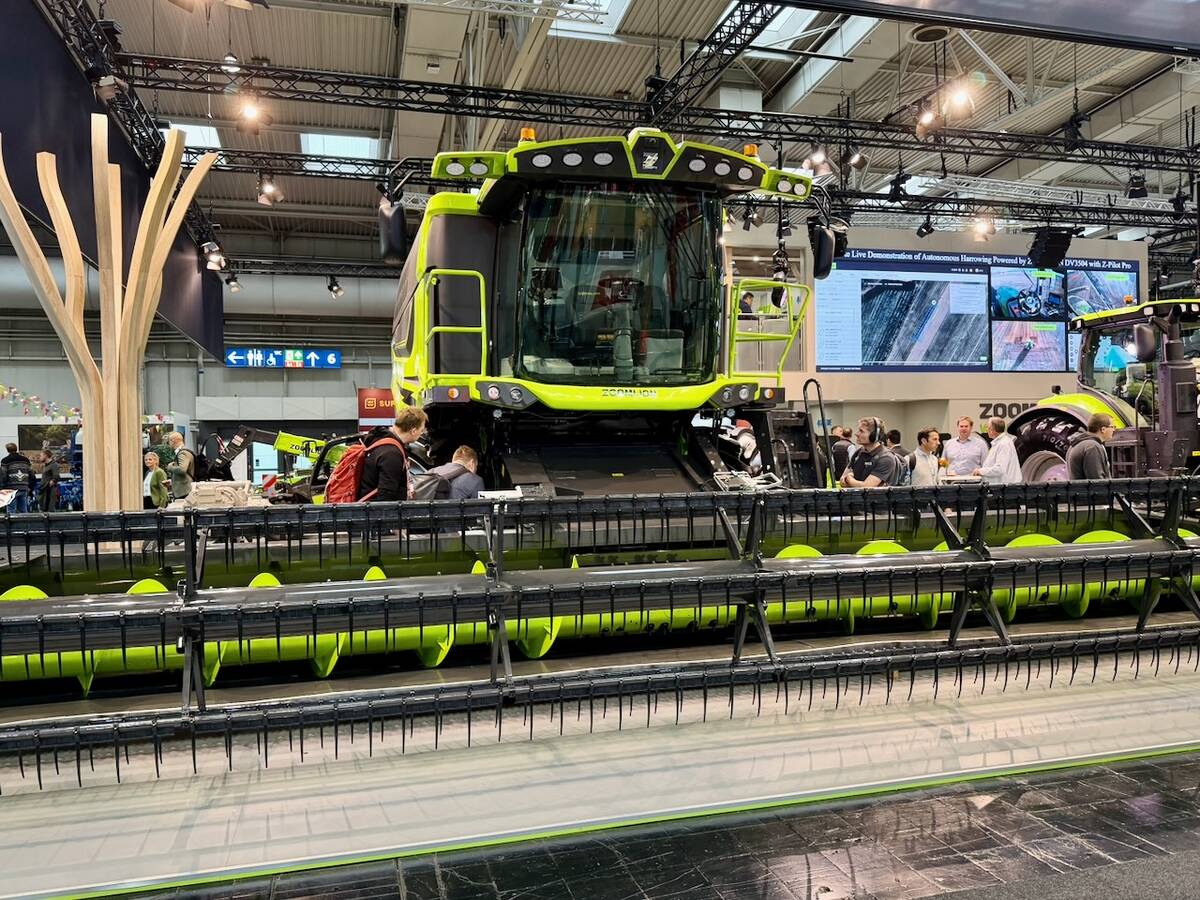Without the benefit of fans or aeration, early hot-spot detection is the only way to protect bagged grain.
Wireless technology has simplified that challenge.
Dimo’s Labtronics introduced a wireless infrared temperature probe this winter that is designed to function with its Motomco 919 Smart Chart II handheld unit.
Dubbed the Rigid Wireless Multi-Sensor Probe, the unit can carry up to eight independent sensors, each capable of transmitting temperature data to a hand-held receiver 75 metres away, says Jason Diehl of Labtronics.
Read Also

Agritechnica Day 3: Hybrid drive for a combine, data standards keep up to tech change and tractors of the year
Agritechnica 2025 Day 3: Hybrid drive for a combine, data standards keep up to tech change and tractors of the year.
The company began marketing its modified Motomco 919 in the 1990s, and it eventually evolved into the computerized Smart Chart.
“To go along with that, we developed a small temperature probe that plugs directly into the Smart Chart II, basically giving the second generation Smart Chart another function as a thermometer,” he said.
“Then three years ago, we added a stand-alone, 10 foot bin probe to feed information into the system. But that had only one infrared sensor up at the tip.”
Diehl said the next logical step was a wireless temperature probe with multiple infrared sensors.
The threaded aluminum shaft comes in five foot sections and each section has two sensors. Producers can screw them together and go all the way up to 20 feet, providing eight temperature points.
“There’s no cables and no wires between the sections,” he said.
“Each sensor sends directly to the receiver, which plugs into the top of your existing Smart Chart II. All existing Smart Chart II units can be set up to work with the new probe.”
Diehl expects the price to be less than $1,000 when the unit becomes available this summer.
For more information, contact Jason Deal 204-772-6998 or visit www.labtronics.ca.















